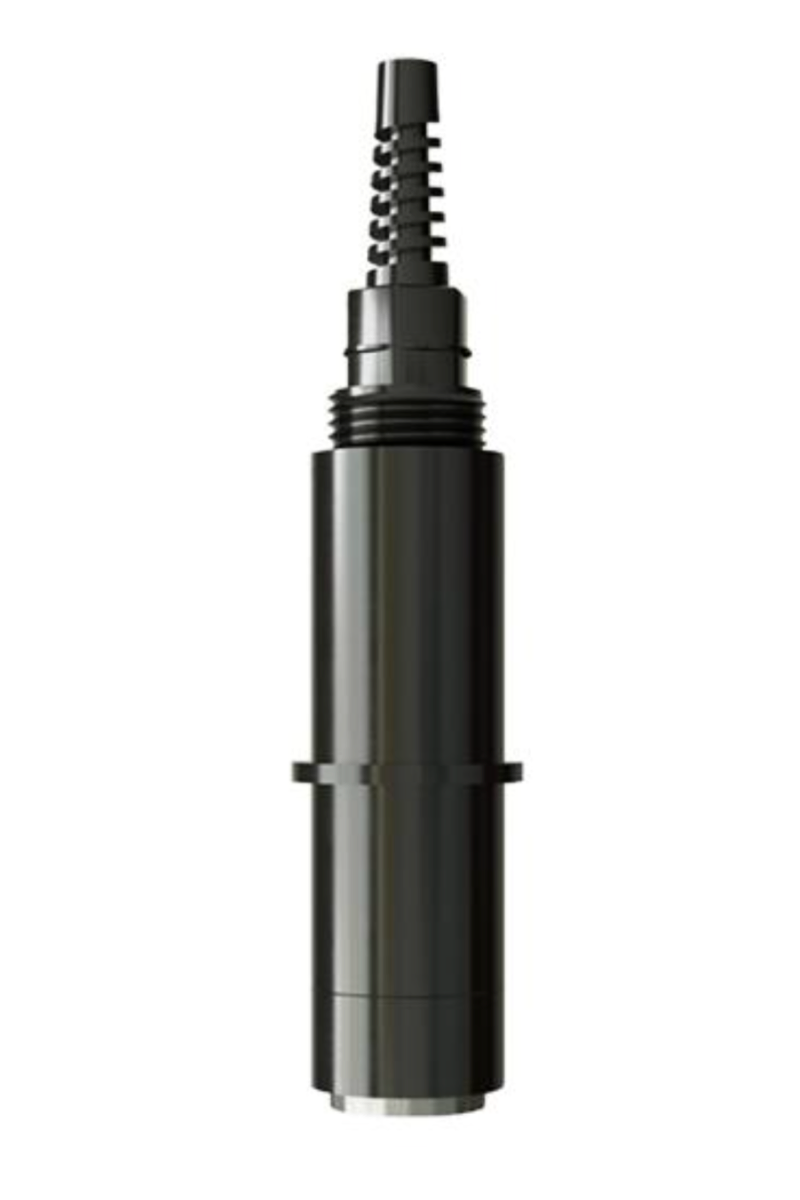
DO-P100 Fluorescent Dissolved Oxygen Sensor (PE Housing)
Cost-effective fluorescent dissolved oxygen sensor with PE plastic construction. Ideal for aquaculture, hydroponics, and freshwater monitoring applications.
Product Highlights
View all in Specifications tabOverview
The DO-P100 is a cost-effective fluorescent dissolved oxygen sensor featuring PE (polyethylene) plastic housing. Using the same proven optical fluorescent technology as the DO-100, the DO-P100 provides accurate, maintenance-free DO monitoring at an economical price point. Ideal for freshwater applications including aquaculture, hydroponics, aquaponics, and pond monitoring.
Key Features
- Fluorescent Technology: No oxygen consumption, stable readings
- Wide Measurement Range: 0-20 mg/L and 0-200% saturation
- High Accuracy: ±2% full scale precision
- Automatic Temperature Compensation: Integrated PT1000 sensor with ±0.1°C accuracy
- Lightweight PE Construction: Durable plastic housing
- Digital Output: RS485 Modbus RTU communication
- IP68 Waterproof: Fully submersible operation
- No Stirring Dependency: Accurate in still or flowing water
- Cost-Effective: Economical solution for freshwater applications
Applications
- Freshwater aquaculture
- Fish farming and hatcheries
- Hydroponics and aquaponics
- Indoor aquarium systems
- Recirculating aquaculture systems (RAS)
- Pond monitoring
- Water garden management
- Educational and laboratory use
- Small-scale water treatment
- Research projects
Technical Specifications
The DO-P100 uses proven fluorescent quenching technology. Blue light excites a fluorescent dye on the sensor cap, and dissolved oxygen quenches this fluorescence. The sensor measures the phase shift of the returned red light, which correlates directly to oxygen concentration. This optical method provides superior long-term stability compared to traditional electrochemical sensors.
Understanding Dissolved Oxygen
Dissolved oxygen is essential for aquatic life and water quality:
Critical DO Levels:
- Fish health: Minimum 5 mg/L, optimal 7+ mg/L
- Shrimp: Minimum 4 mg/L, optimal 6-8 mg/L
- Aquaponics: 5-8 mg/L for fish and plant roots
- Hydroponics: 5-8 mg/L optimal for root zone
- Hypoxic (stress): < 3 mg/L
Factors affecting DO include temperature (warmer water holds less oxygen), organic decomposition, fish respiration, plant photosynthesis, and aeration.
Fluorescent Technology Advantages
vs. Traditional Electrochemical Sensors:
- No oxygen consumption during measurement
- Accurate in still water (no stirring required)
- Minimal drift over time
- No electrolyte depletion
- No warm-up time required
- Simple cleaning and maintenance
PE Housing: Ideal Applications
Best for:
- Freshwater environments (ponds, aquaculture, hydroponics)
- Protected installations (indoor tanks, systems)
- Moderate temperatures (0-40°C)
- Budget-conscious projects
- Educational use
- Hobby applications
Note: For saltwater applications, use DO-100 (stainless steel) or DO-110 (titanium).
Installation and Operation
The DO-P100 is designed for easy installation in freshwater systems with vertical or horizontal mounting options. The sensor should be fully submerged, positioned to avoid air bubbles on the membrane cap.
Calibration is simple with one-point air calibration. Remove the sensor, expose the moist cap to ambient air, and set to 100% saturation. Monthly calibration is recommended for optimal accuracy.
Maintenance consists of periodic cleaning to remove algae and biofilm. The non-replaceable cap design simplifies maintenance while keeping costs low.
Aquaculture Applications
Fish Farming:
- Maintain > 5 mg/L minimum at all times
- Target 7-9 mg/L for optimal growth
- Monitor during night (lowest DO period)
- Automated aeration control
- Emergency low-oxygen alerts
Hydroponics/Aquaponics:
- Monitor root zone oxygen (5-8 mg/L optimal)
- Verify aeration effectiveness
- Balance fish and plant needs
- Optimize nutrient uptake
Connectivity and Integration
The DO-P100’s RS485 Modbus RTU interface enables:
- Direct integration with aquaculture controllers
- Data loggers for automated monitoring
- Aeration control systems
- Alarm and notification systems
- Cloud monitoring for remote access
- Multi-sensor networking
Temperature Effects on DO
Warm water holds less dissolved oxygen:
- 10°C: ~11 mg/L saturation
- 20°C: ~9 mg/L saturation
- 30°C: ~7.5 mg/L saturation
The DO-P100’s automatic temperature compensation ensures accurate readings across its 0-40°C operating range.
DO-P100 vs. DO-100/DO-110 Comparison
Choose DO-P100 for:
- Freshwater only (ponds, tanks, hydroponics)
- Moderate temperatures (0-40°C)
- Budget constraints
- Protected indoor systems
- Educational/hobby applications
Choose DO-100/DO-110 for:
- Saltwater/marine environments
- Industrial wastewater treatment
- Harsh chemicals or extreme conditions
- Extended temperature range
- Premium commercial operations
Why Choose DO-P100
- Cost-effective: Lower price for freshwater applications
- Proven technology: Same fluorescent method as premium models
- Low maintenance: Simple operation and cleaning
- Energy savings: Optimize aeration, reduce power costs
- Prevent losses: Early warning prevents fish kills
- Easy integration: RS485 Modbus RTU communication
- Reliable performance: Quality sensor at an economical price
Related Products
Other solutions in the DO probes category
